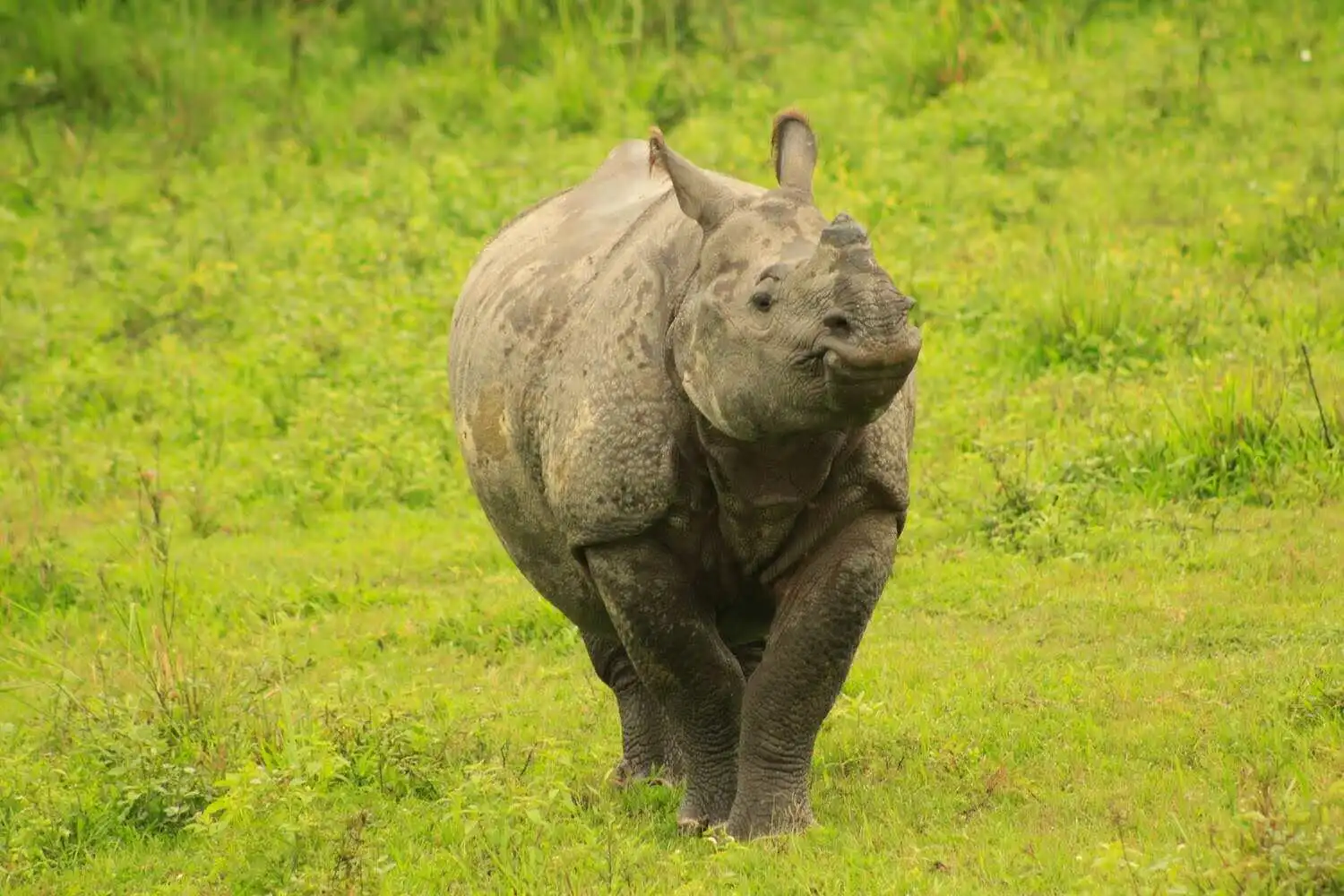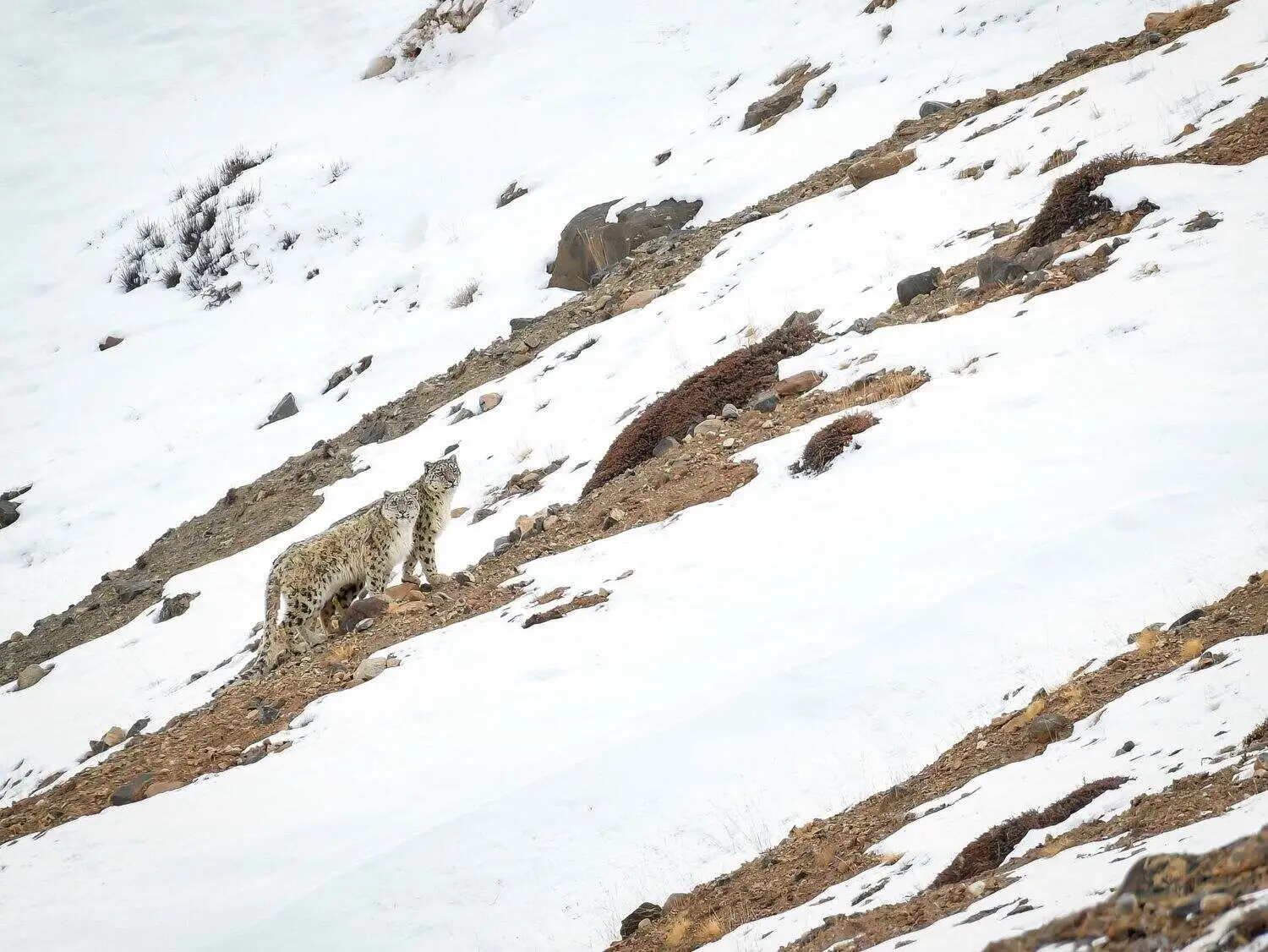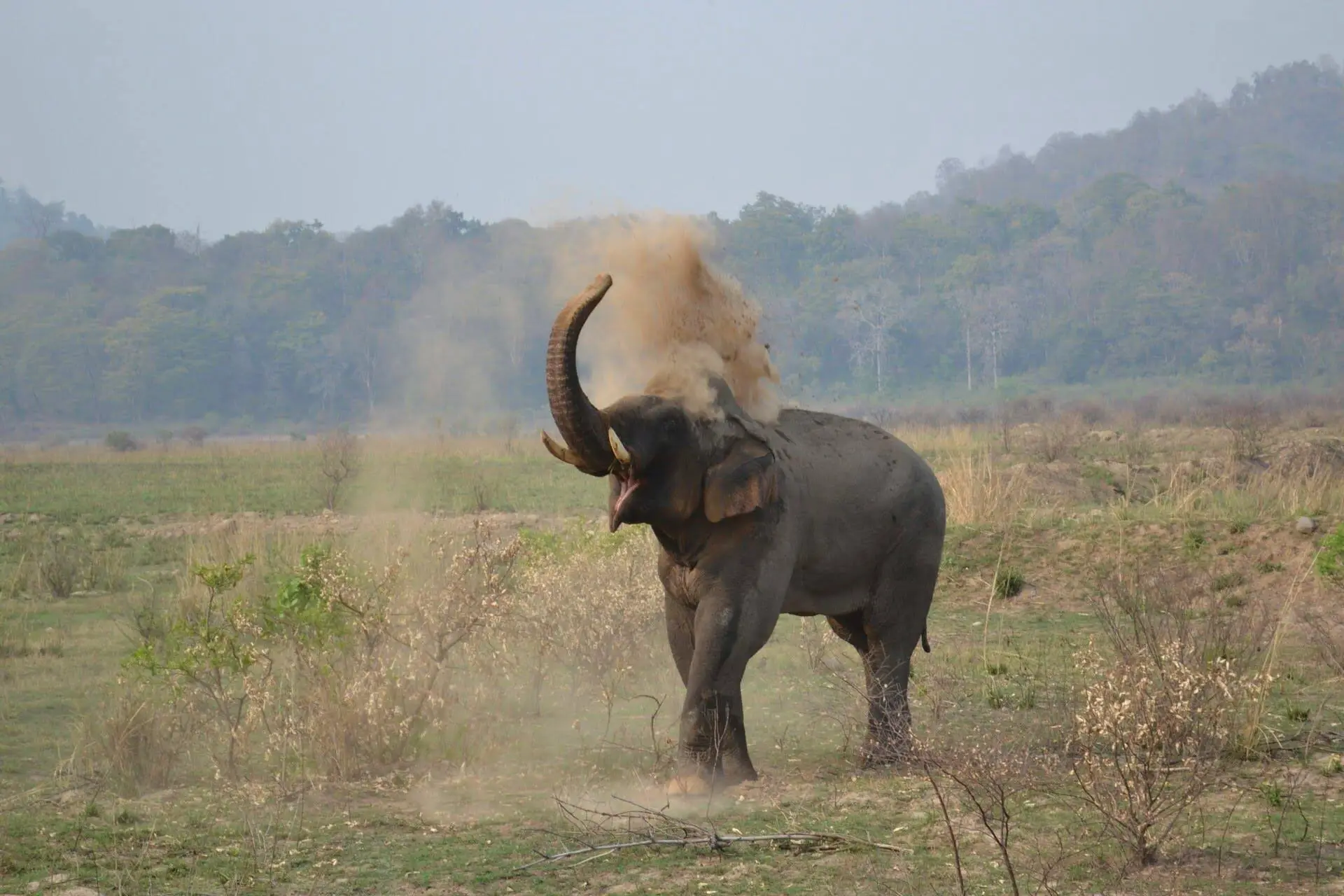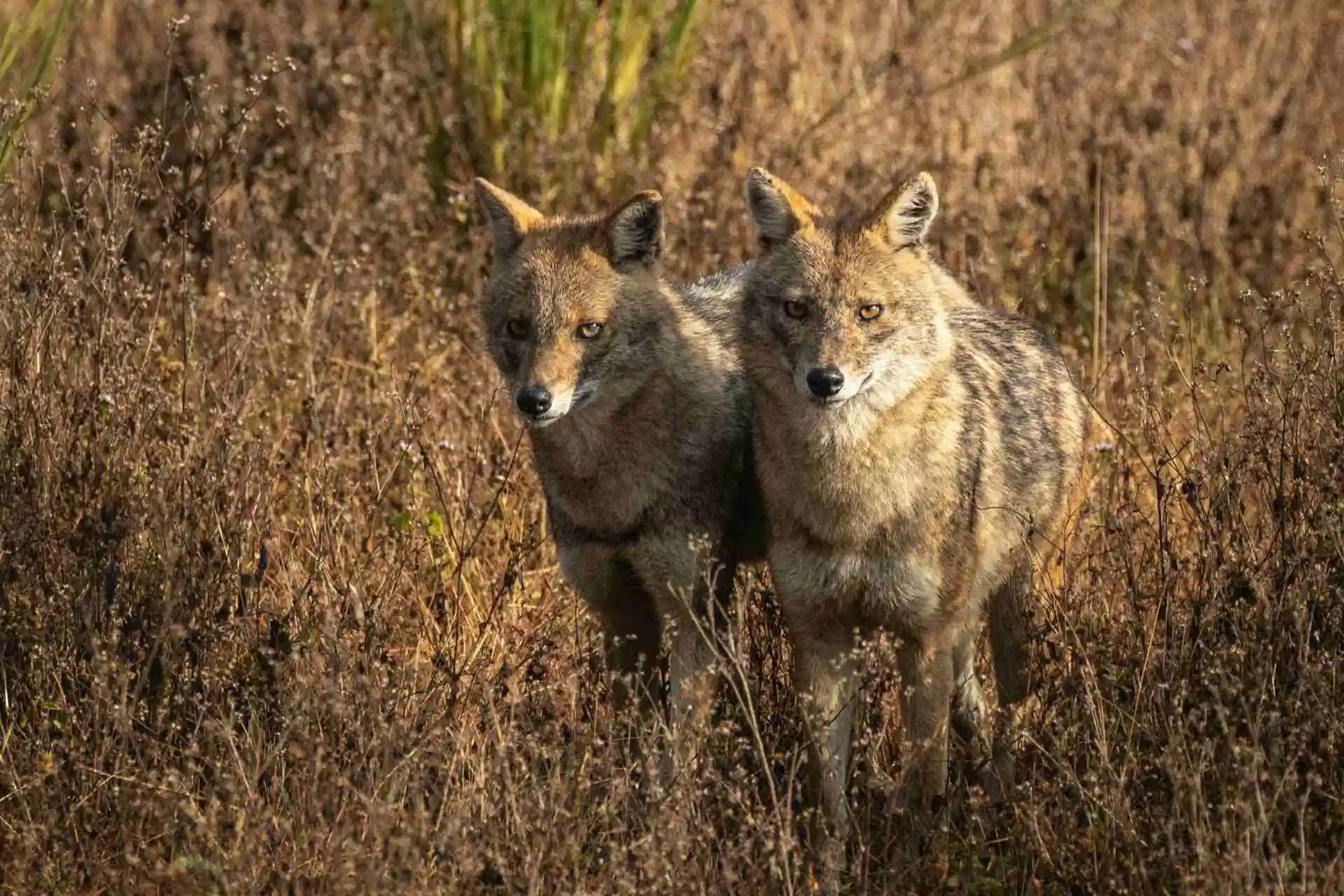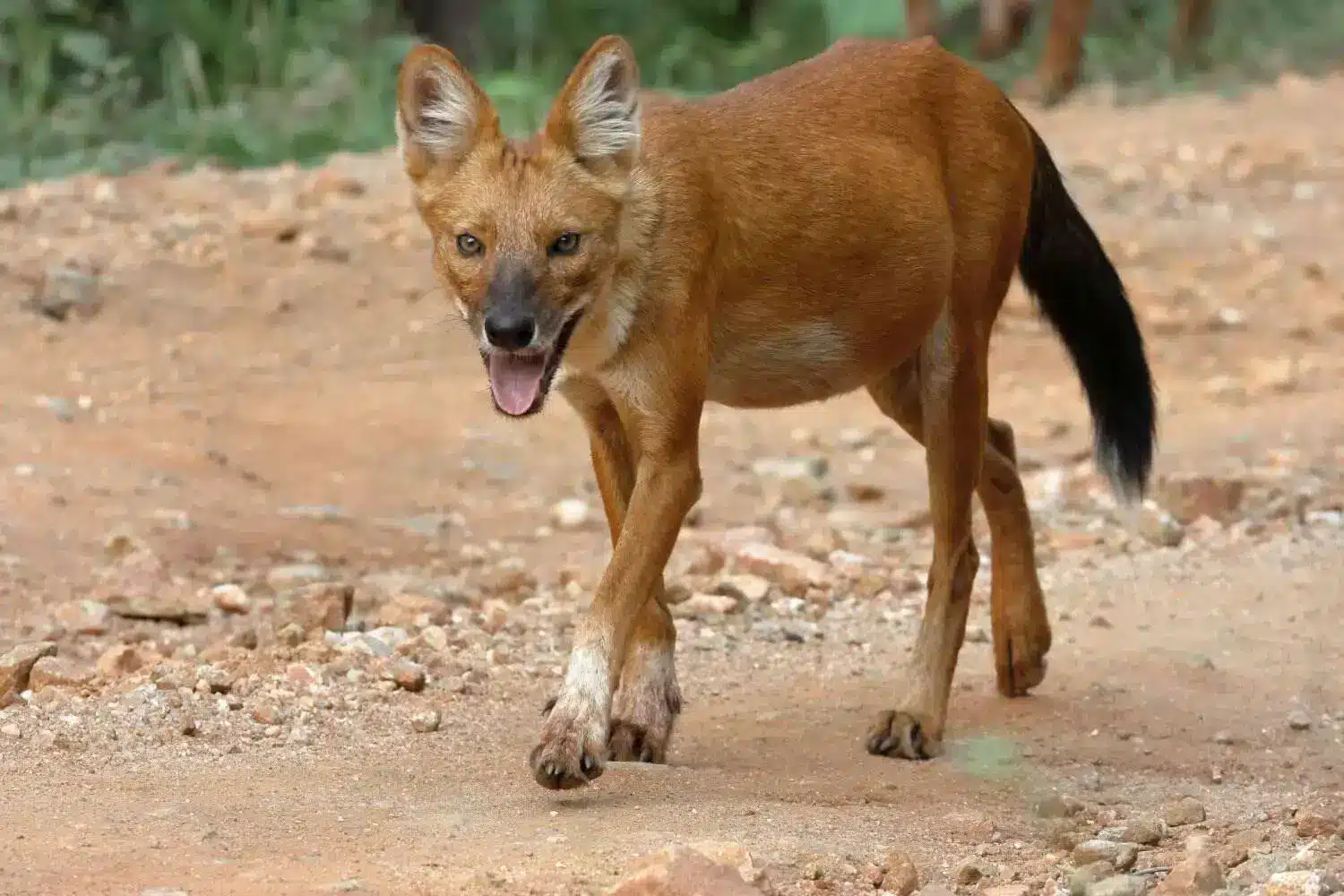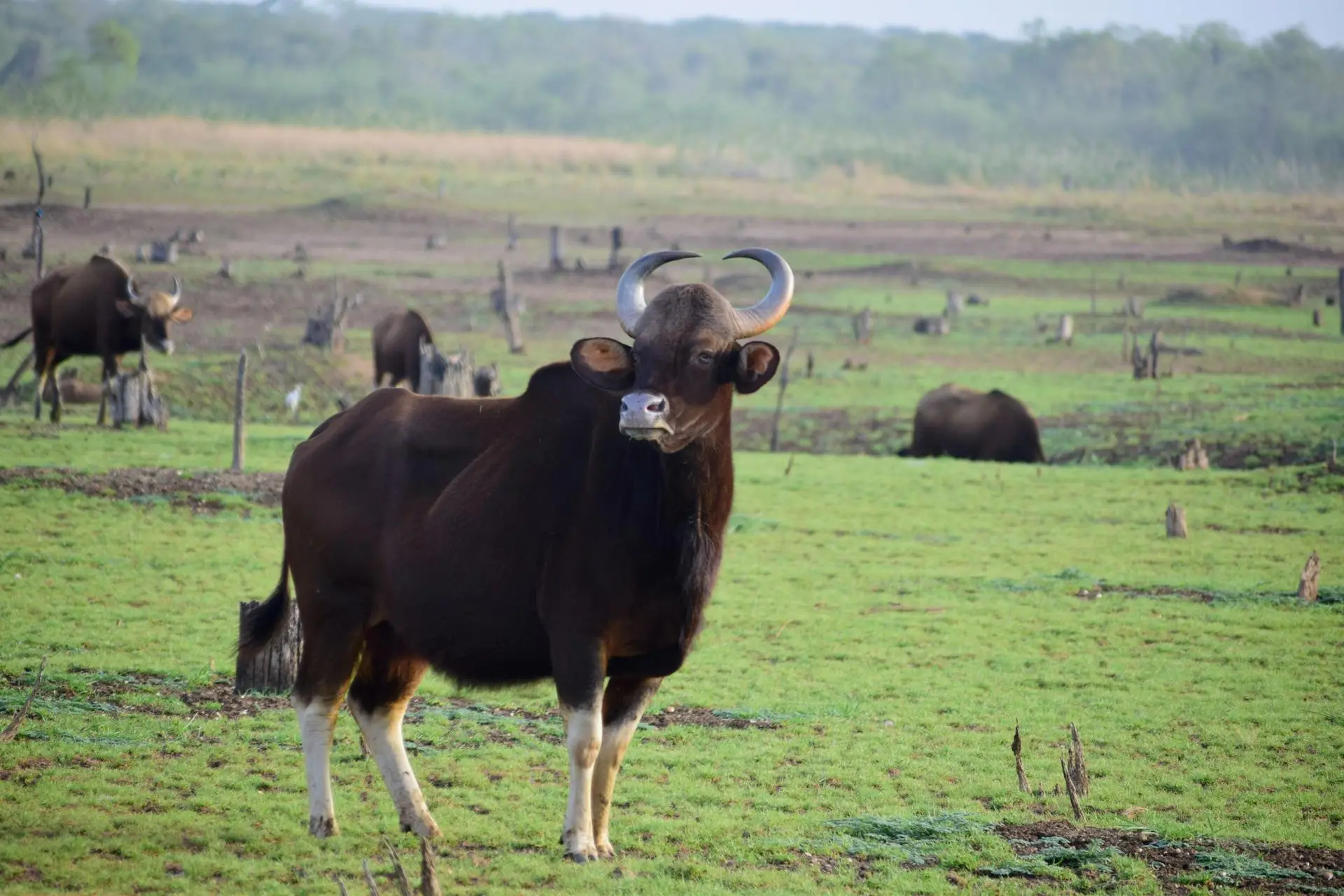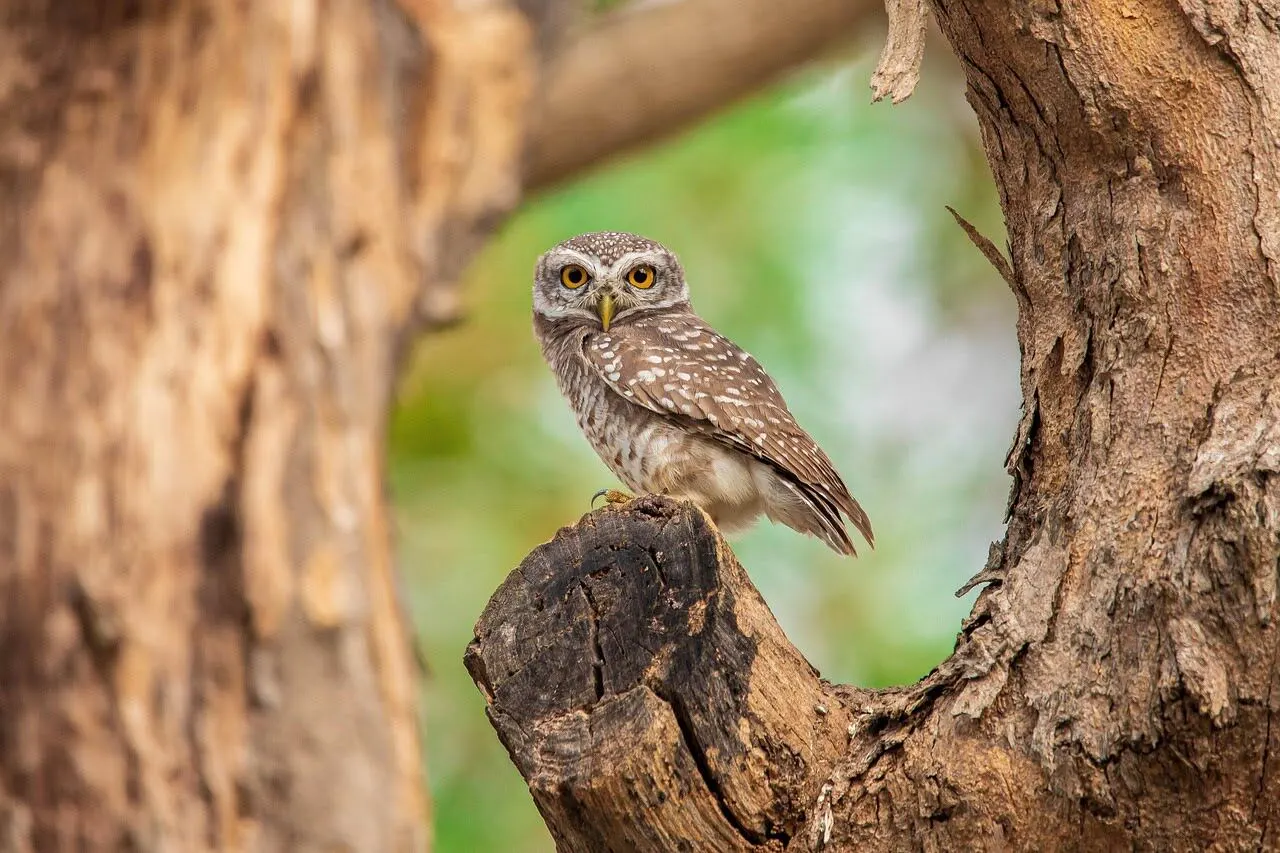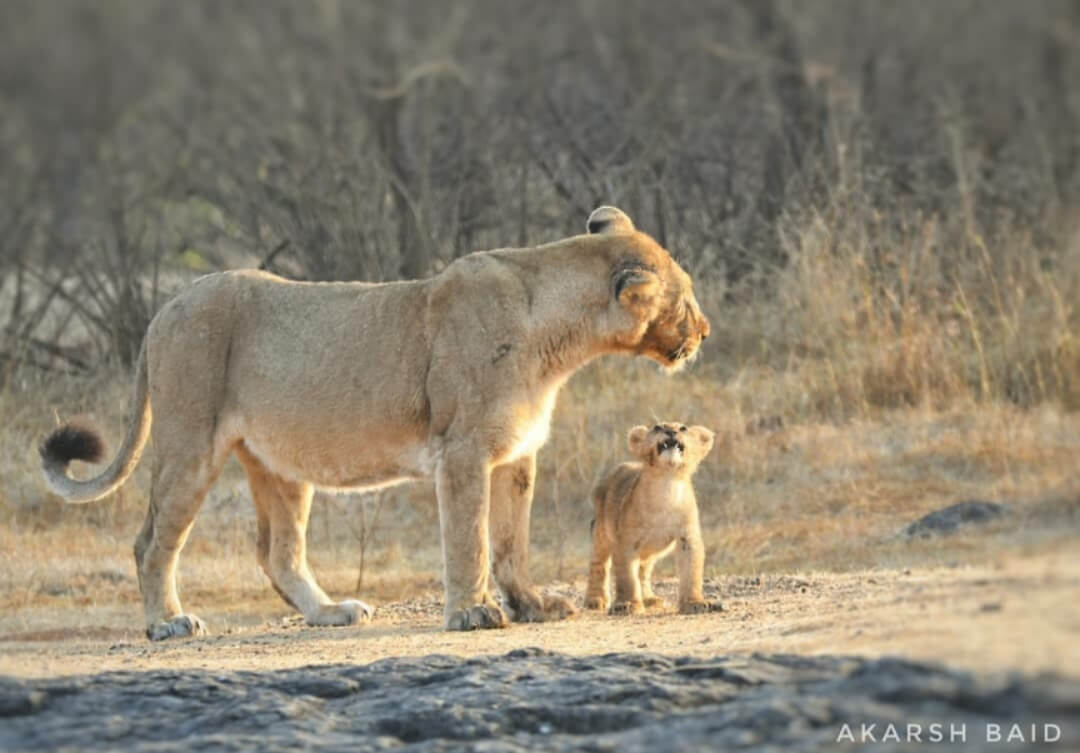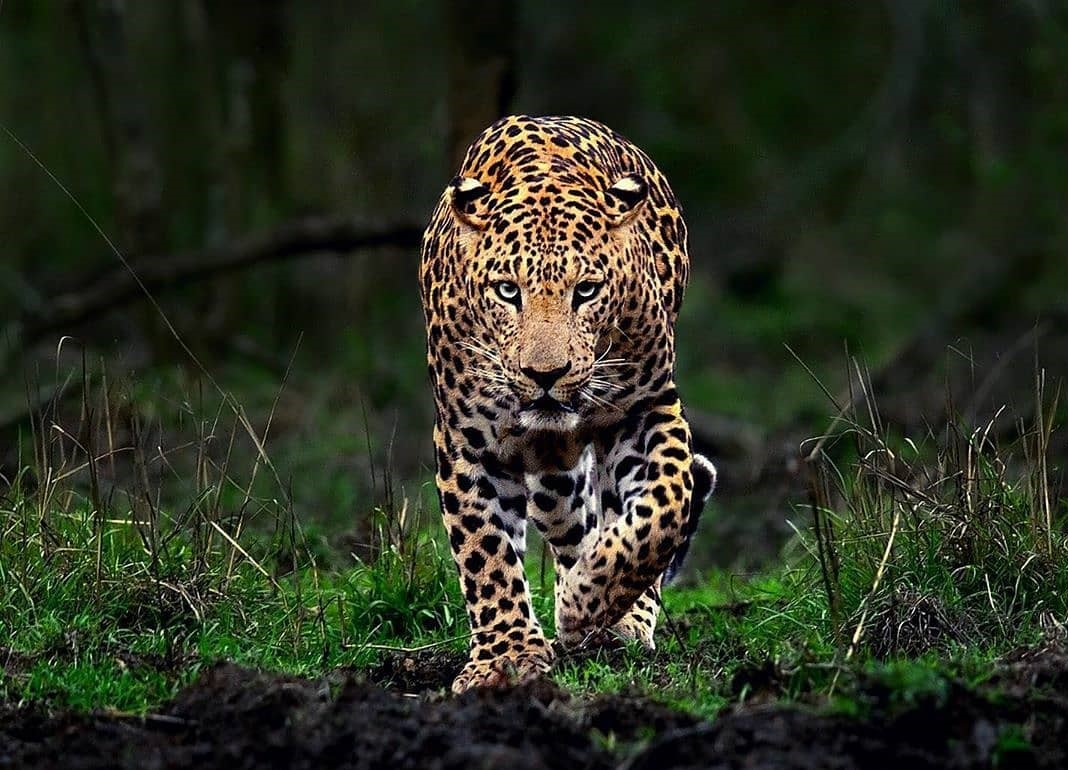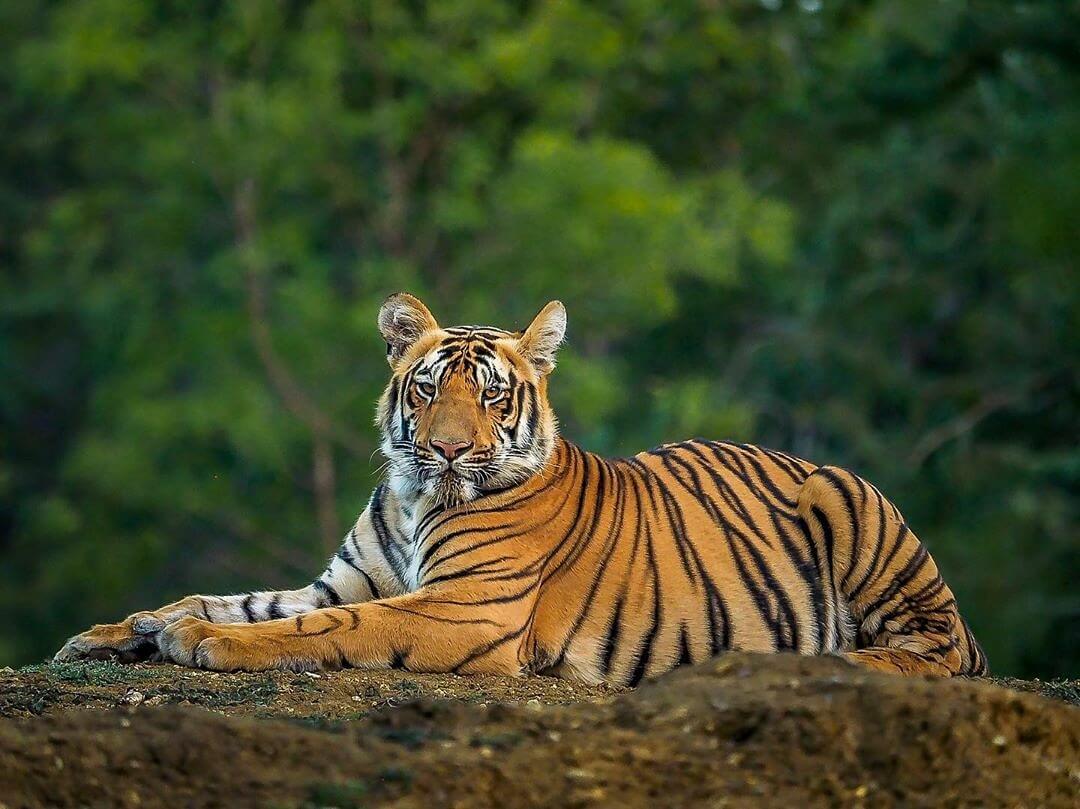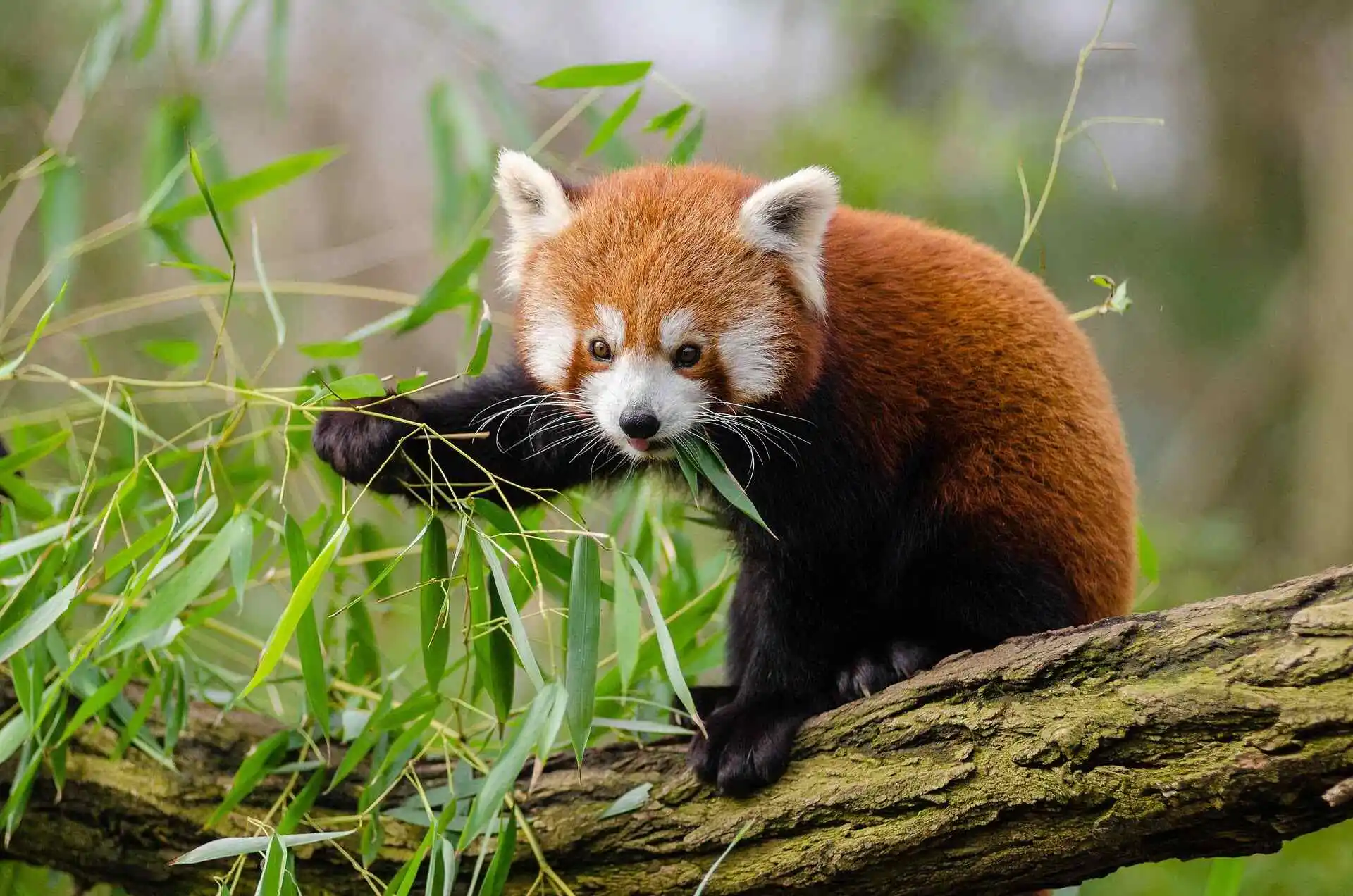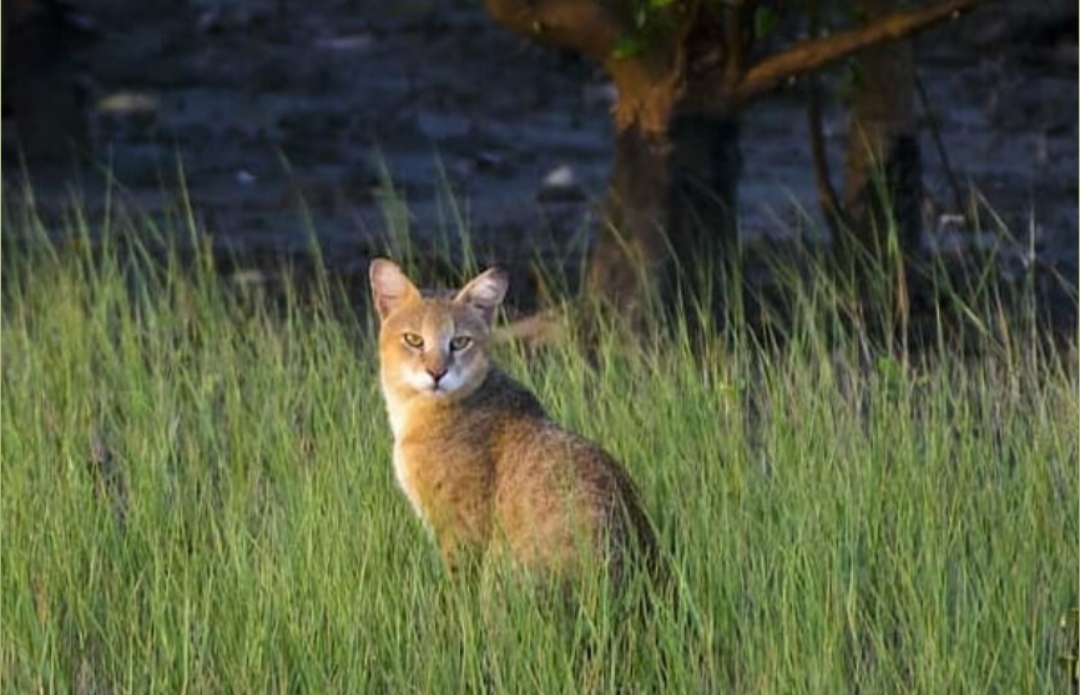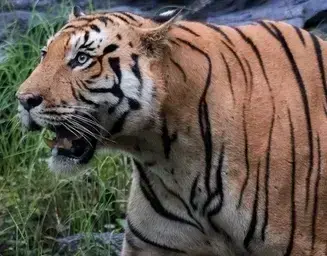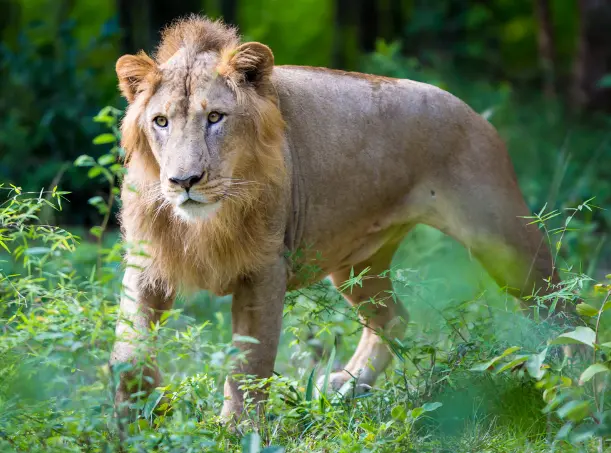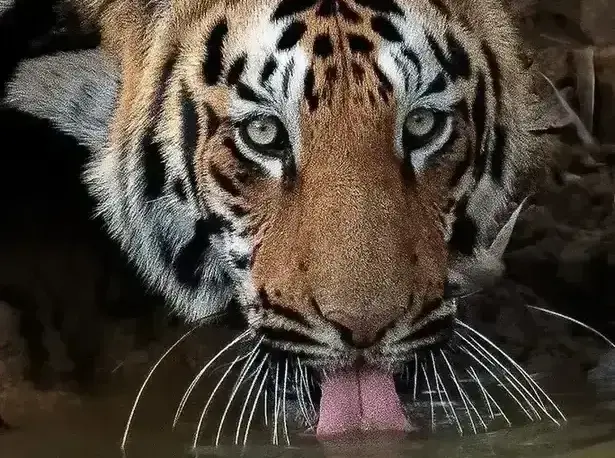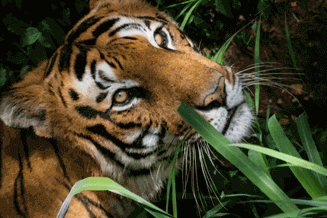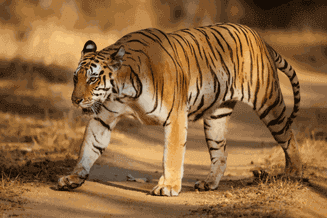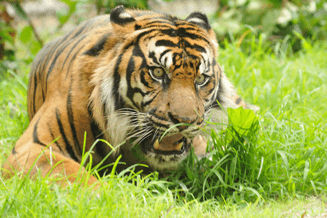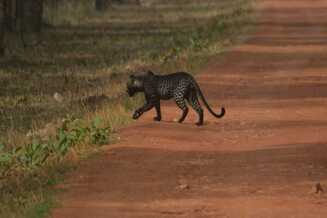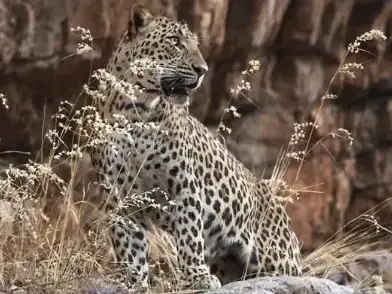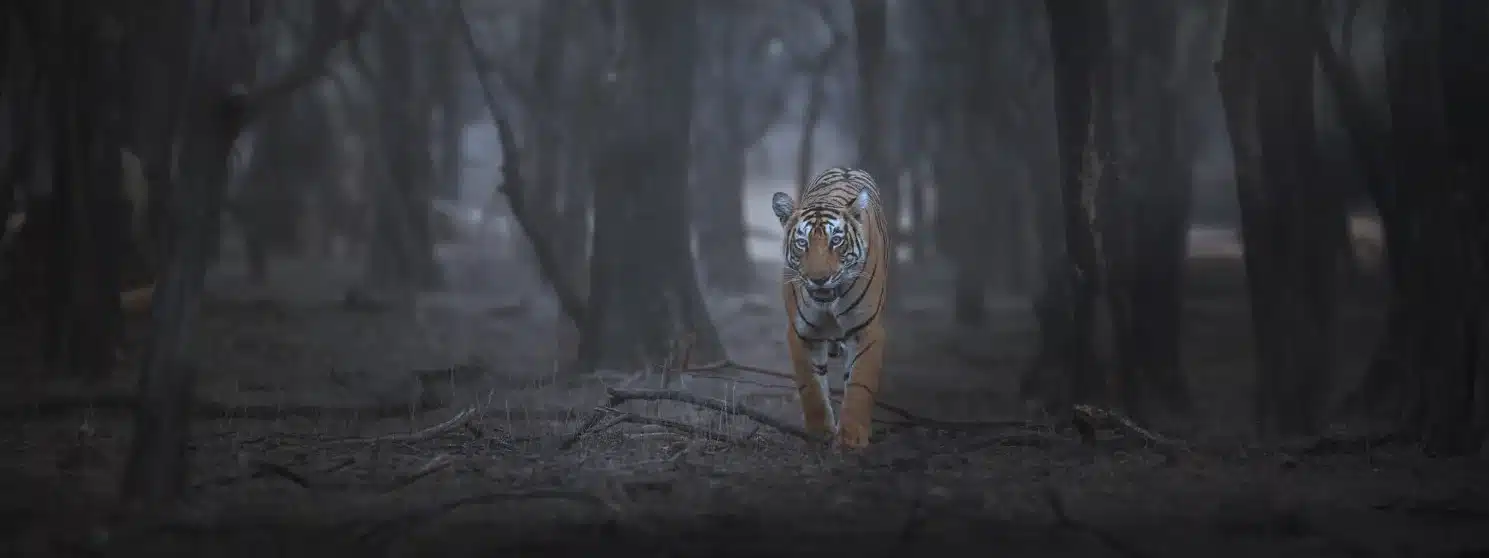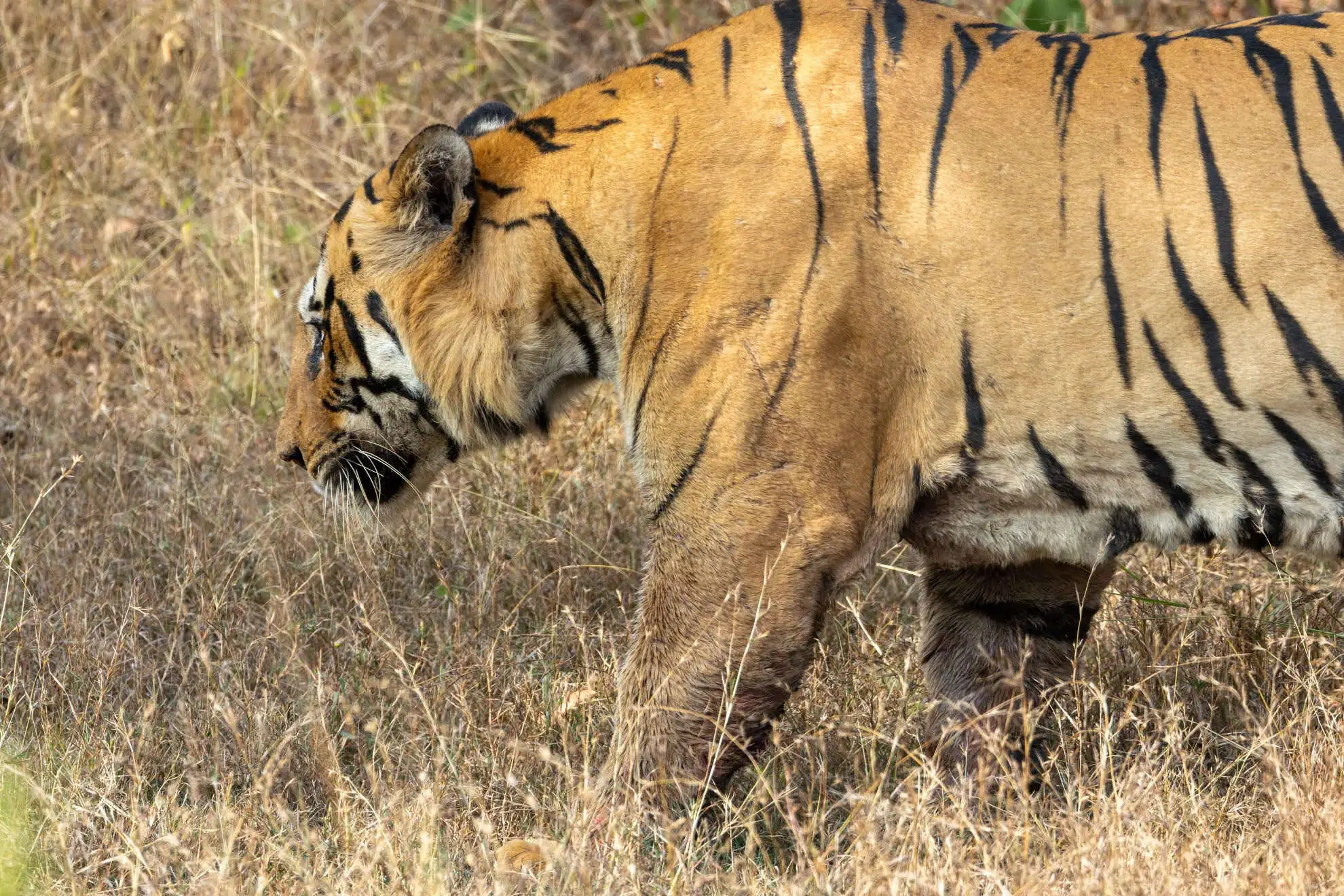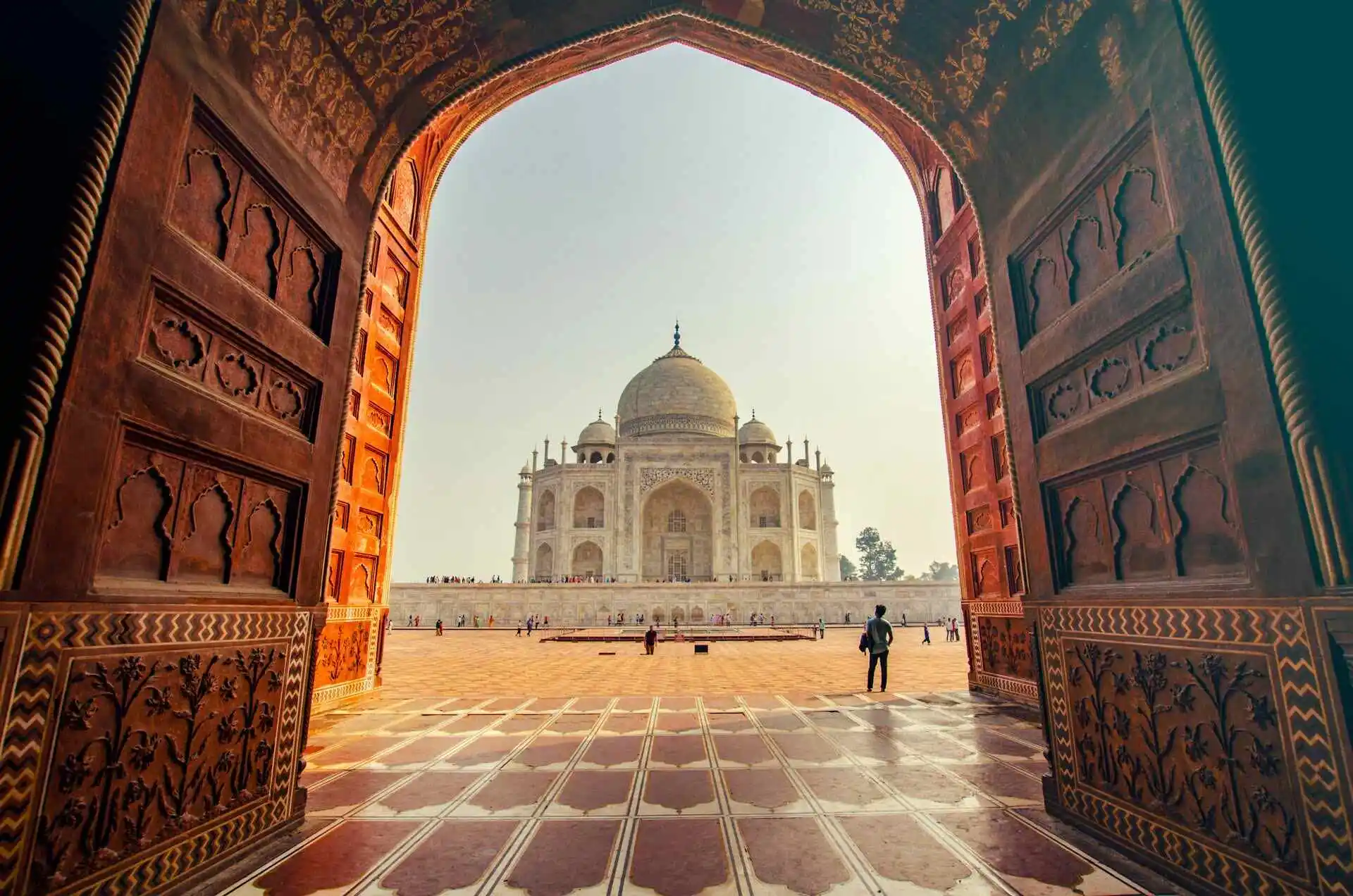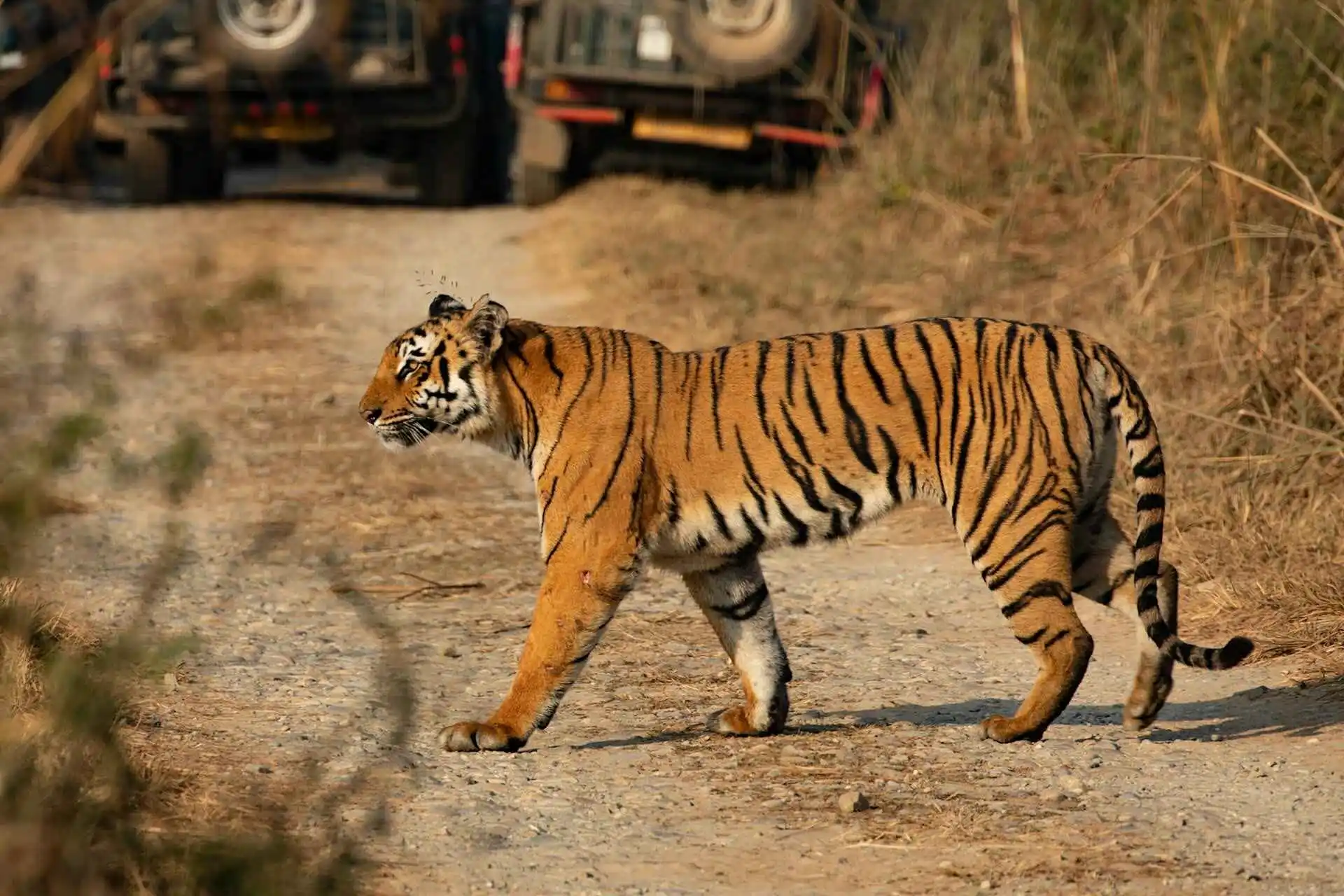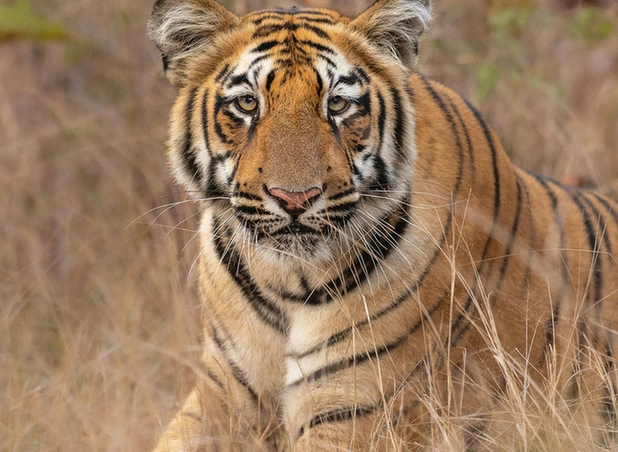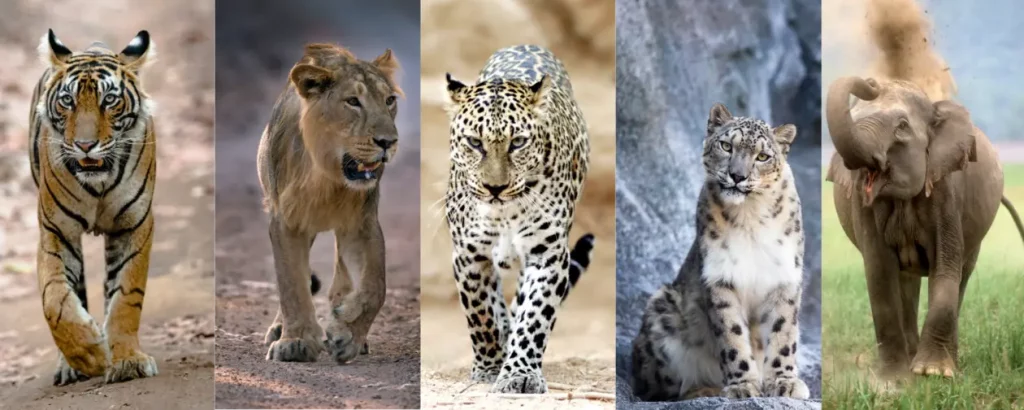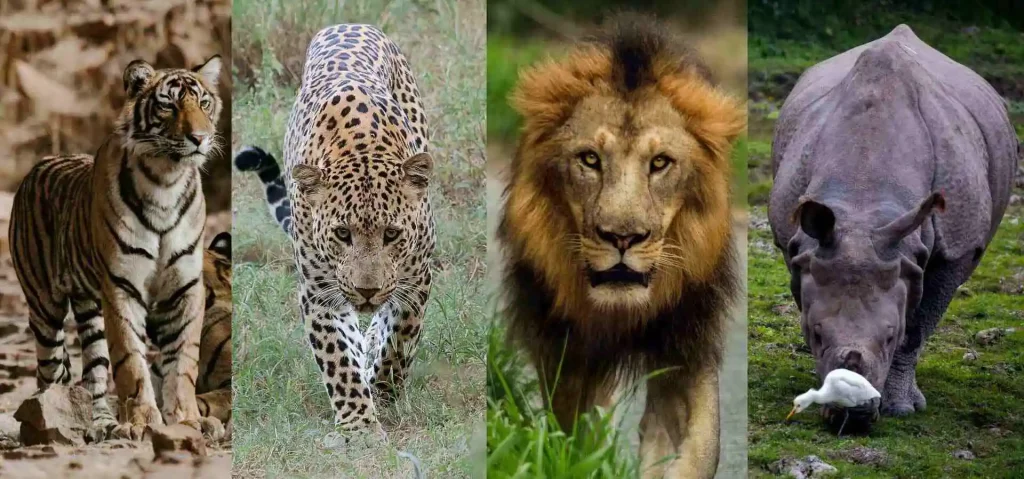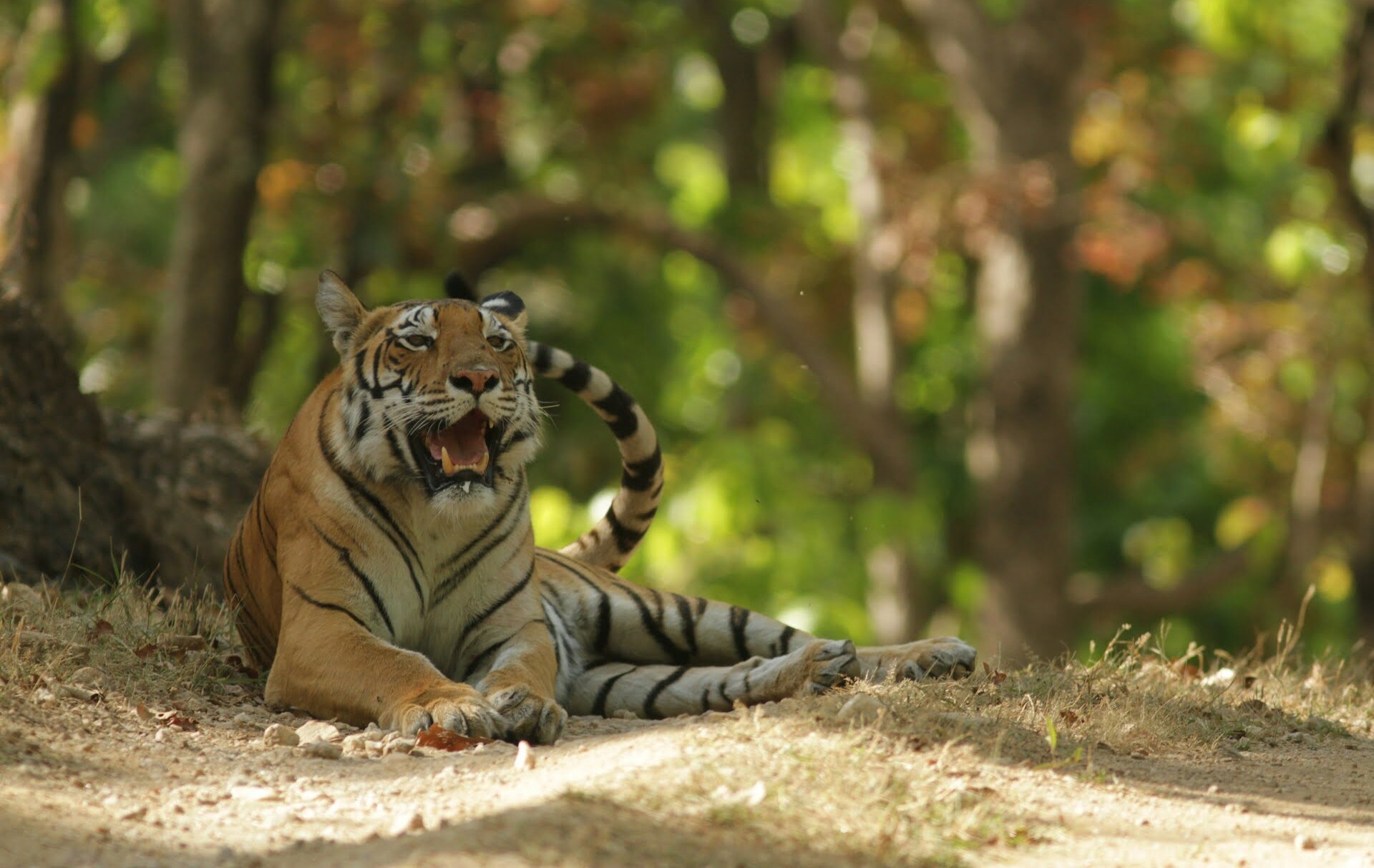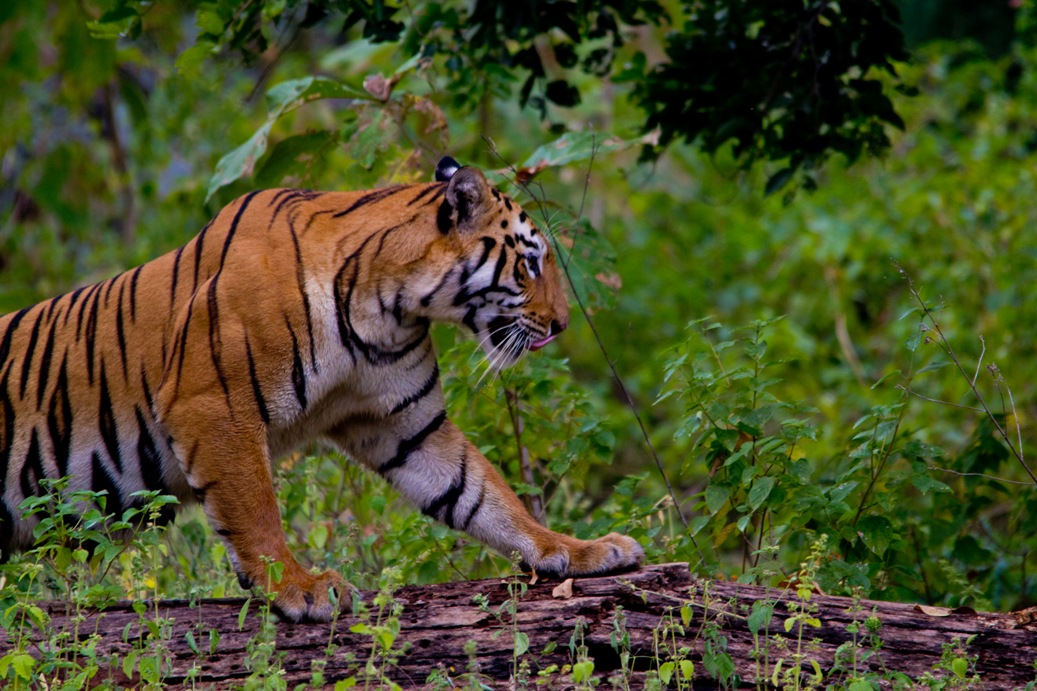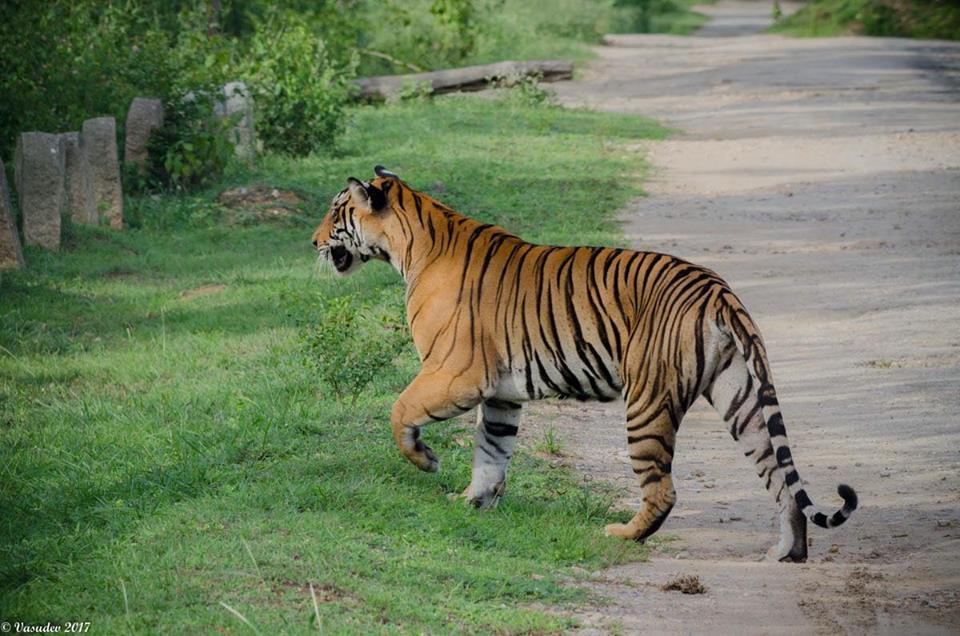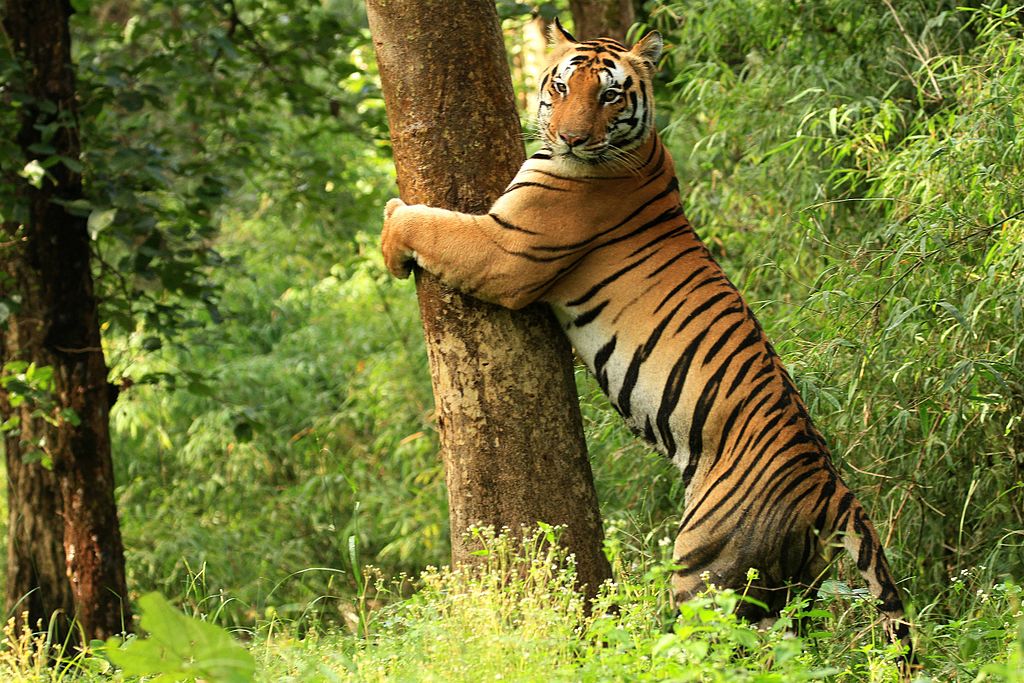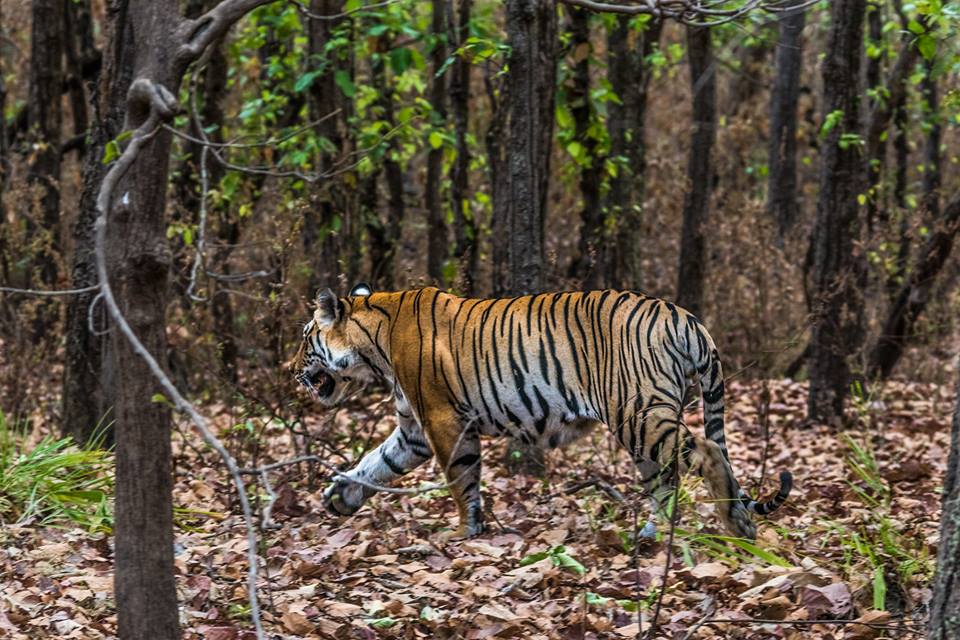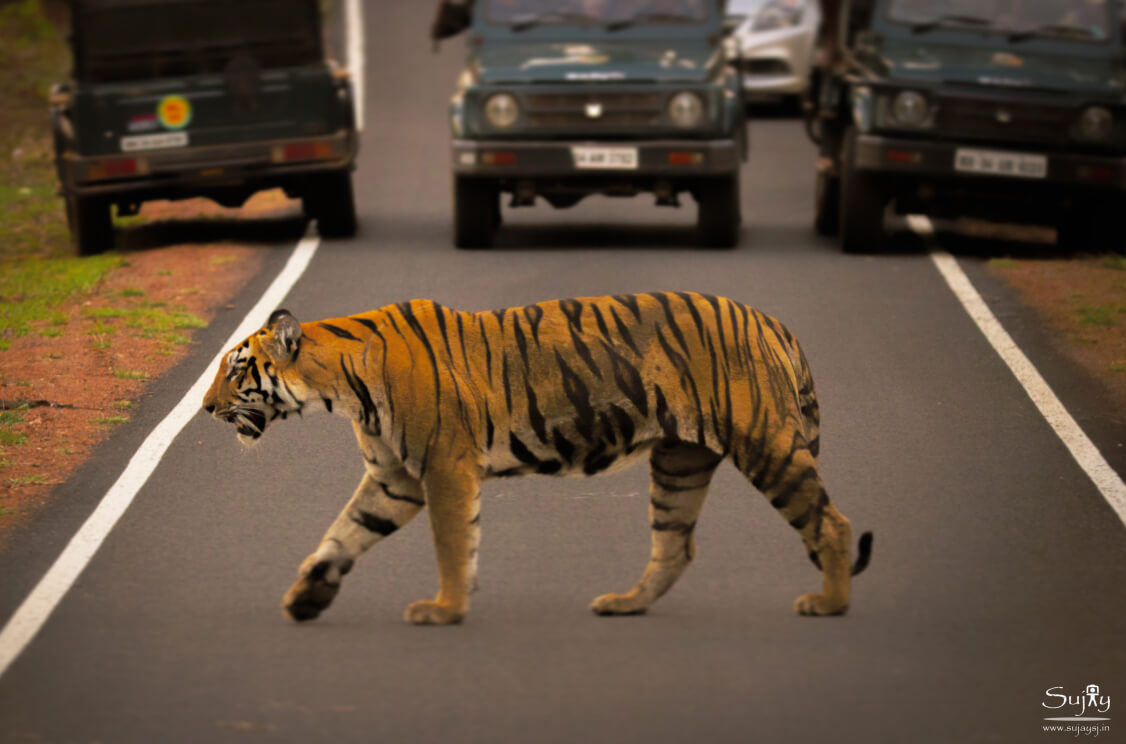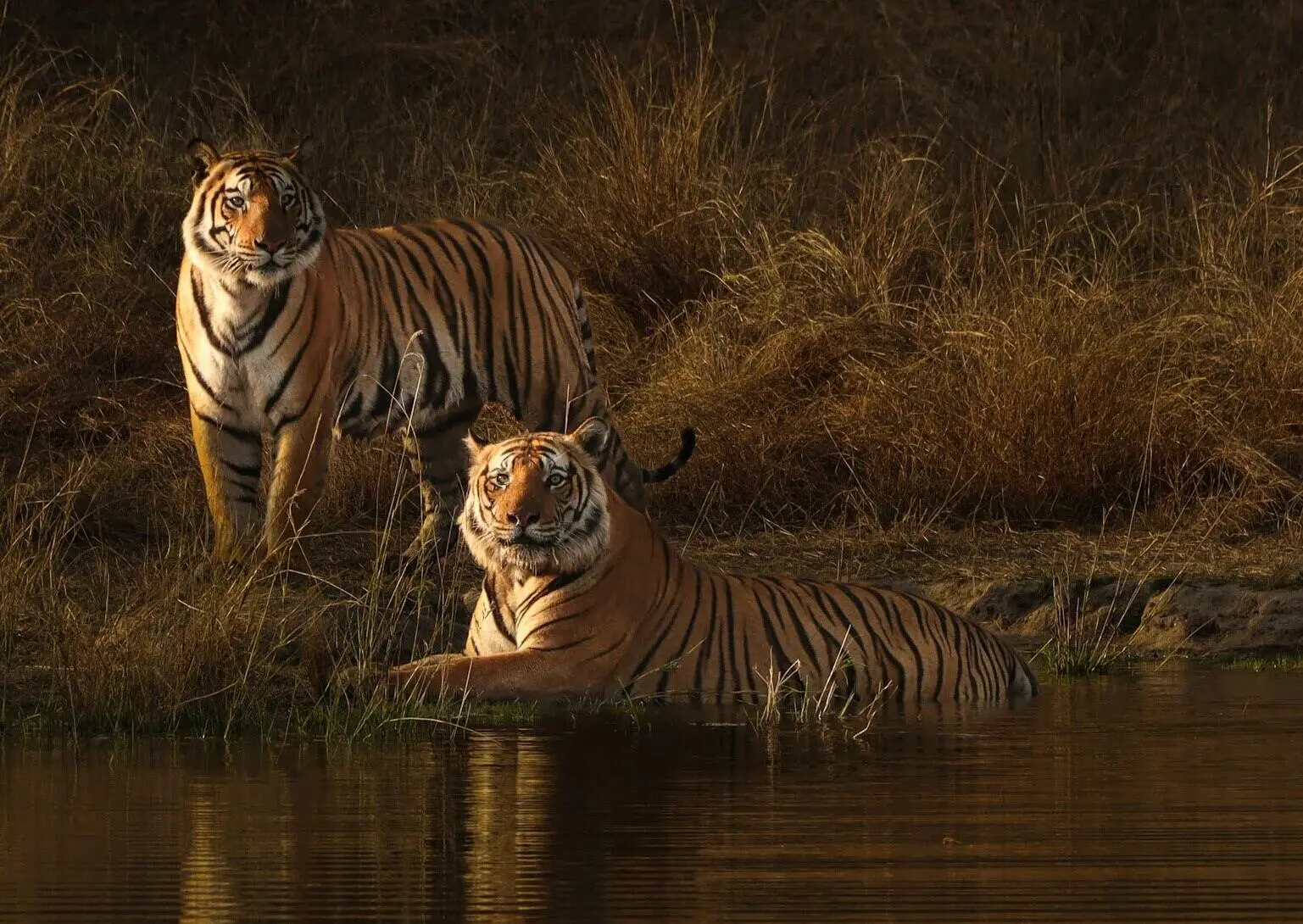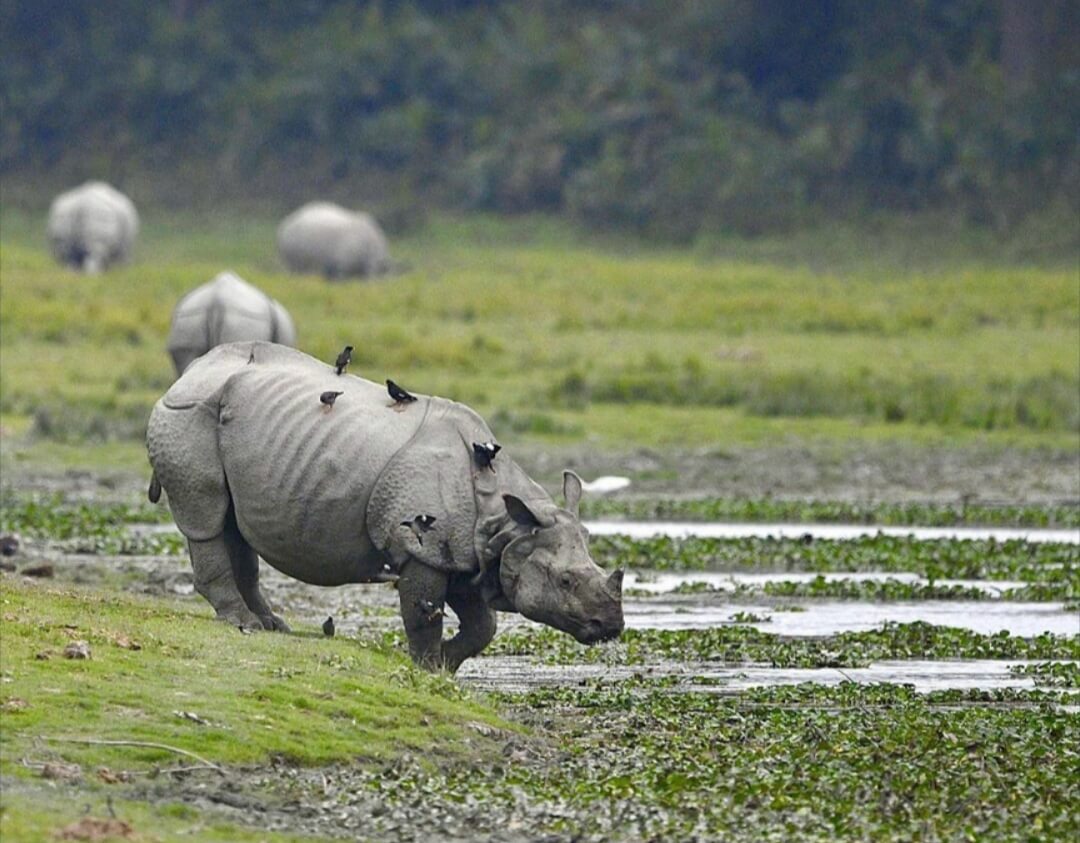Did you know that the Indian rhinoceros, also known as the one-horned rhino, has skin that resembles armor plates? These thick, folded layers look like something out of ancient mythology, but they’re perfectly adapted to protect this magnificent creature from thorny undergrowth and rival rhinos. Found in the wetlands and grasslands of India and Nepal, these giants are known for their solitary nature, except when they gather at favorite waterholes to wallow and cool down.
The Mighty Giant of the Grasslands
The Indian One-Horned Rhinoceros (Rhinoceros unicornis) is one of India’s most iconic and majestic wildlife species. Known for its thick, armor-like skin and solitary nature, this giant herbivore roams the floodplains and grasslands of northern India and Nepal. Once widely spread across the Indian subcontinent, today, the species is found mainly in protected areas, thanks to successful conservation efforts.
Once on the brink of extinction due to poaching and habitat loss, the population has now recovered to over 4,000 individuals. However, the species is still classified as Vulnerable on the IUCN Red List.
Physical Features & Unique Adaptations
- The Indian rhino is the largest of all Asian rhino species, with males weighing between 1,800 to 2,700 kg.
- It stands 5.7–6.5 feet tall at the shoulder, making it one of the tallest land mammals in India.
- Unlike African rhinos, which have two horns, this species has just one black horn that can grow up to 25 cm (10 inches) long.
- Its thick grey-brown skin forms natural armor-like plates, offering protection against predators and fights with other rhinos.
- Rhinos have poor eyesight, but their sense of smell and hearing are excellent, helping them detect threats from afar.
Key Characteristics of One-Horned Rhino
| Feature | Details |
|---|---|
| Scientific Name | Rhinoceros unicornis |
| Average Height | 5.7–6.5 feet at the shoulder |
| Weight | 1,800–2,700 kg (males heavier than females) |
| Lifespan | 35–45 years in the wild |
| Diet | Herbivorous (grass, leaves, fruits, aquatic plants) |
| Habitat | Grasslands, wetlands, and floodplains |
| Conservation Status | Vulnerable (but recovering due to conservation) |
Habitat & Lifestyle
The Indian One-Horned Rhinoceros thrives in tall grasslands, wetlands, and riverine forests. It prefers areas near water bodies, as it enjoys wallowing in mud and water to regulate body temperature and ward off parasites.
- Primary habitat: The floodplains of the Brahmaputra, Ganges, and Indus rivers.
- Daily routine: Rhinos are most active in the early morning and late afternoon, spending much of the day resting in water or mud.
Diet and Feeding Habits
The Indian rhino is a strict herbivore, feeding primarily on:
- Grasses (its favorite food, especially tall elephant grass)
- Leaves and branches from shrubs and trees
- Aquatic plants found in wetlands
- Fruits and crops, especially when it ventures close to human settlements
Using its prehensile upper lip, the rhino skillfully grasps and pulls vegetation, making feeding easier. It consumes about 40 kg of food daily, and since it drinks water multiple times a day, it stays close to rivers and ponds.
Behavior & Social Structure
Indian rhinos are mostly solitary except during mating or when mothers are raising their calves. However, they are not completely territorial and often tolerate other rhinos grazing nearby.
- Males are usually more aggressive and may fight over territory and mates.
- Despite their heavy build, rhinos can run at speeds of up to 40 km/h when threatened.
- They communicate using grunts, honks, and growls, and they also use scent marking to establish dominance.
Breeding & Life Cycle
- Mating season: Throughout the year, but mostly between August and April.
- Gestation period: Around 15–16 months (one of the longest among land mammals).
- Birth: A female gives birth to a single calf, which stays with her for nearly 2–4 years before becoming independent.
- Lifespan: Rhinos can live up to 35–45 years in the wild.
Where to Find Them – Top National Parks
If you want to see the Indian One-Horned Rhino in the wild, these are the best places to visit:
- Kaziranga National Park (Assam) – Home to over 2,600 rhinos, the largest population in the world.
- Manas National Park (Assam) – A UNESCO World Heritage Site with a stable rhino population.
- Pobitora Wildlife Sanctuary (Assam) – Has the highest rhino density in India.
- Dudhwa National Park (Uttar Pradesh) – One of the few places outside Assam where rhinos are thriving.
- Jaldapara National Park (West Bengal) – A significant rhino habitat with successful conservation efforts.
Conservation Efforts & Threats
Threats to the Indian Rhino
Despite conservation success, rhinos still face several threats:
- Poaching: Their horn is illegally traded for use in traditional medicines, mainly in China and Vietnam.
- Habitat Loss: Expanding human settlements and agriculture are reducing their natural habitat.
- Human-Wildlife Conflict: As human populations grow, rhinos sometimes wander into villages, leading to conflicts.
Conservation Success Stories
Thanks to dedicated conservation programs, the rhino population has been increasing:
- Kaziranga National Park’s anti-poaching measures have significantly reduced rhino killings.
- Reintroduction projects have helped increase rhino numbers in Dudhwa and Manas National Parks.
- Strict legal protections have been enforced under India’s Wildlife Protection Act, 1972.
Interesting Facts About the Indian Rhino
- Rhino horn is not made of bone – It is composed of keratin, the same protein found in human fingernails.
- Despite their size, rhinos are excellent swimmers and enjoy long dips in the water.
- They have no natural predators except for tigers, which may prey on young calves.
- Rhinos are known as “ecosystem engineers” because their grazing helps maintain healthy grasslands.
- They use mud baths as sunscreen, protecting their skin from sunburn and parasites.
- Their population dropped to just 200 individuals in the early 20th century, but conservation efforts have revived their numbers.
- Indian rhinos can run faster than a human sprinter, reaching speeds of up to 40 km/h!
The Indian One-Horned Rhinoceros is a true conservation success story, proving that dedicated efforts can help save endangered species. Seeing one in the wild is an unforgettable experience, reminding us of the importance of protecting these gentle giants and their habitats.

